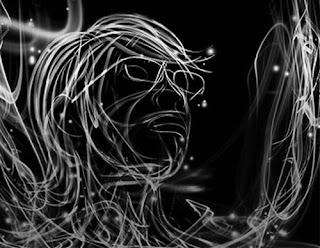Why is the Representation example representational and how does that operate for the viewer?
The Example in Dondis' book, on page 70-71, is considered to be representational for the reason that is consists of much detail, letting me understand what kind of birds they are. This knowledge obtained can reveal location, culture, and other geographical information.
In what way is the Abstraction example abstract, from what does the abstraction derive, what does it communicate to the viewer and how?
This example is clearly showing "selective use of the critical parts of the form." The happy face has become an iconic symbol for the 21st century. It denotes happiness, an expression of emotion without any visual contact.
Here is a picture that is representational of a smile and/or teeth. It is considered representational is for the reason that it consists of much detail. We know these to be teeth due to our culture coming to an agreement upon what this should be called. This image is showing large amounts of detail and has varying levels of categorization.
This is an example of abstract level of visual information. picture is extremely generalized and is universally understood. If you go to the other end of the world they anyone will recognize this image as a happy face. This is also broken down to to basic shapes. Its entirety consists of three circles and two lines. Another indicator for this abstract image is that it conveys emotion. One of the main things that causes this is caused by the immensely saturated yellow.
 By definition A symbol is a "picture, written word...that denotes something resemblance." This symbol,in particular, happens to be referring to a business. The tooth symbol is nearly broken down to its mot simplest form. It only consists of a pair of curved lines. The tooth shaped lines indicate dentist.
By definition A symbol is a "picture, written word...that denotes something resemblance." This symbol,in particular, happens to be referring to a business. The tooth symbol is nearly broken down to its mot simplest form. It only consists of a pair of curved lines. The tooth shaped lines indicate dentist. 

















